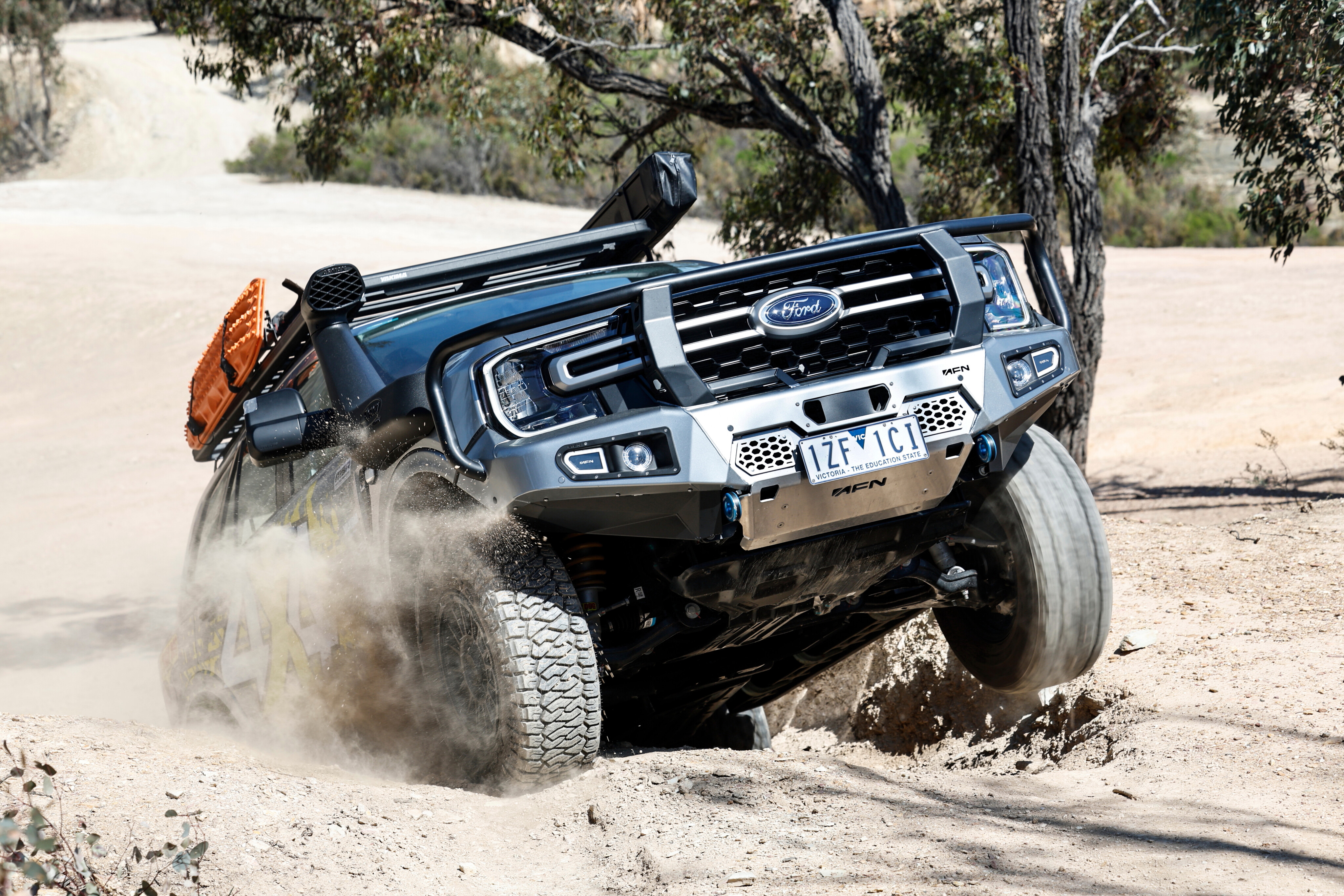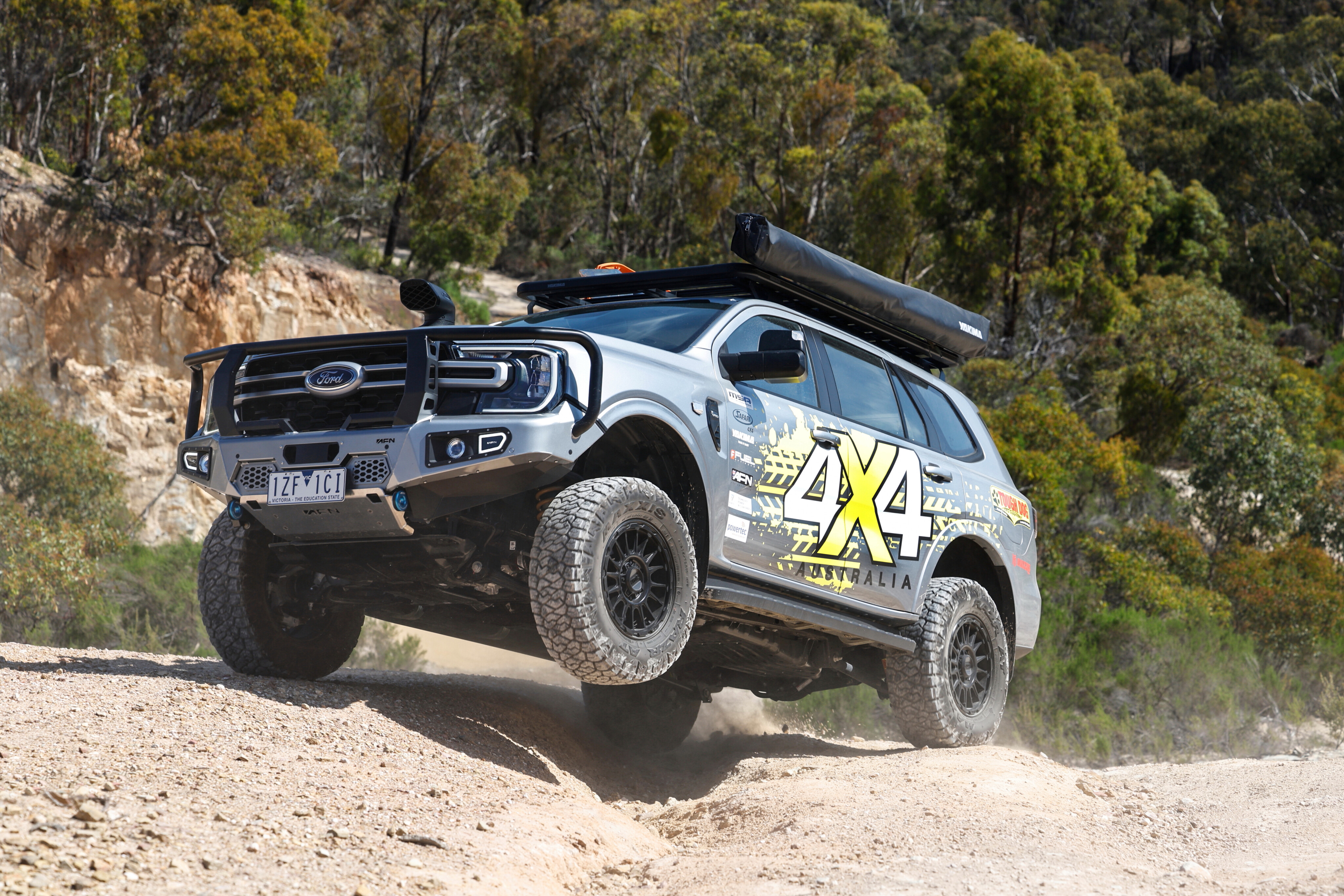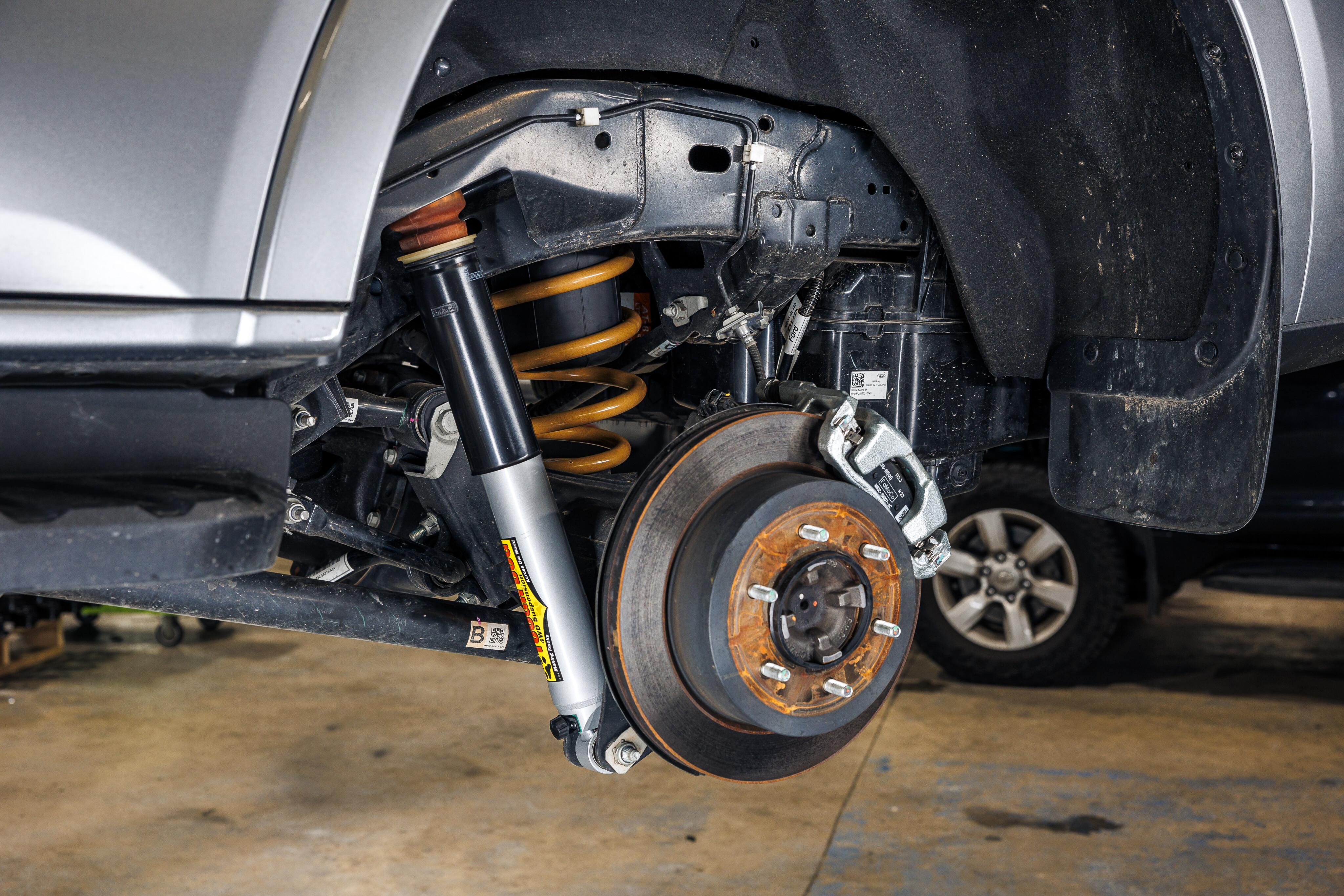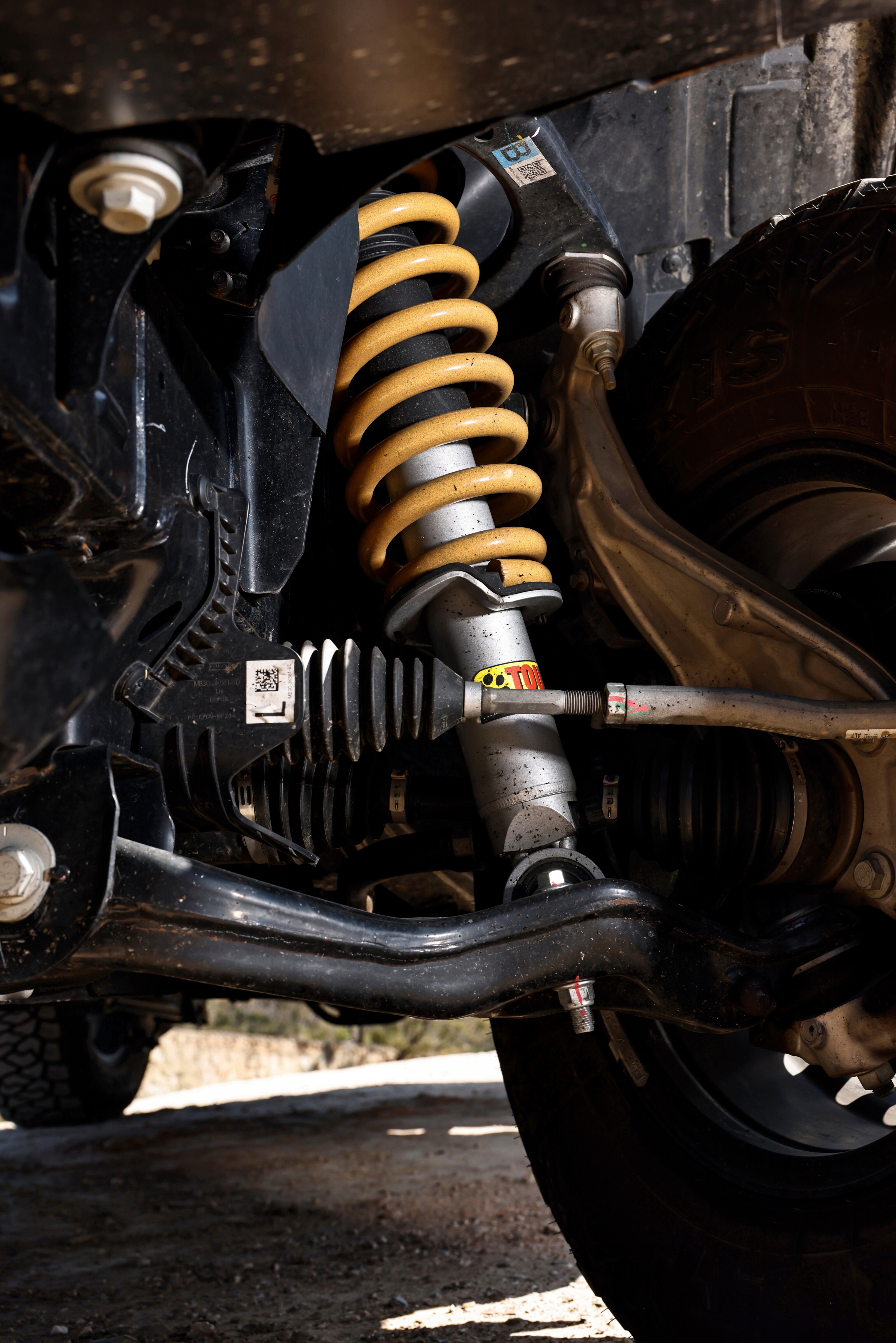
One of the first things we recommend for any 4x4 build is aftermarket suspension.
Sure, the factory stuff is generally pretty good, but when you start loading a vehicle up with all your gear and hitting the rough tracks you’ll soon find its limits … in ground clearance, body control, bump control and handling. Also consider the limits imposed by the factory GVM rating and you soon see why so many of us spend up big on quality suspension upgrades.
In the case of the Ford Everest, the factory did a bloody good job of providing a suspension set-up for carrying the family on day-to-day missions in the suburbs, towing modest loads and getting away for the occasional dirt track adventure. It does it all with a comfortable ride and commendable dynamics.
We reckon Ford’s use of a Watts-link live axle rear-end has a lot to do with the impressive performance of the standard set-up as it’s a superior design to the Panhard rod arrangement used by most of the Everest’s competitor vehicles. However, as mentioned, start loading it up and hitting bush tracks and you’ll soon find its limits.
While upgraded suspension is one of the first improvements we recommend 4x4 owners invest in, it’s usually one of the last modifications we do ourselves. This allows us to get the best idea of what weight we’ll be carrying in the vehicle and what suspension set-up will be needed to provide the best performance.
With the Everest, we knew we wanted around 50mm of increased ground clearance, but we weren’t expecting the need for a GVM upgrade until we rolled it onto the weighbridge. With its AFN bull bar and Kaymar rear bar fitted, we found we weren’t going to be left with a lot of load capacity before we met the vehicle’s 3500kg GVM rating; so we ordered a GVM upgrade kit from our friends at Tough Dog suspension.

At the time, Tough Dog was still working on testing and calibrating the components for the GVM upgrade, so we got on with our build while we waited for the replacement suspension to be sorted.
The Ford suspension was doing a great job in standard form, but it was feeling the weight of the rear bar and the shocks were getting a bit bouncy in the back. Around the same time as Tough Dog had its suspension package ready and certified, Kaymar told us it was going in a different direction with its rear bar and wheel carrier design, and asked us to remove the one we had already fitted. That took around 40kg off the back of the Everest, so not enough to warrant us changing our suspension order, particularly as this was with the vehicle yet to be loaded up.
The Tough Dog GVM upgrade kit is available with a choice of three front coil spring settings depending on the weight on the front end, and in our case we fitted the coils designed to carry a steel bull bar without a winch fitted. A lighter spring can be ordered for vehicles that retain the OE plastic bumper, or a heavier spring can be fitted to vehicles with a winch mounted in the bull bar.

The kit comes with the front struts fully assembled with nine-stage adjustable dampers that can be set to suit various terrain types, vehicle load and driving preference. Adjustment is via an easy-to-reach dial on the bottom of the strut, so you can fine tune the damping as conditions and requirements change.
The Everest GVM kit includes a pair of helper air bags that sit in the replacement rear coils, and these can be inflated to help the coils manage loads without sacrificing ride quality, as would be the case if the kit simply used stiffer coils.
Once fitted it didn’t take long for the suspension to settle and, despite the Everest sitting 55mm higher, we could really feel improvements in body control. The ride is now firmer but it still feels compliant, dealing with pesky suburban potholes far better than before and riding smoothly over corrugations on dirt tracks.

It likewise handles bigger bumps and washouts better than before. We haven’t yet played with the settings on the shocks or the airbags, as the guys at Statewide 4x4 who did the installation set them spot-on for our style of driving. Load the Everest up with four passengers or hitch up a trailer and you’d definitely start making some adjustments, and it’s great to know that functionality is built into the system.
The added ground clearance is a plus, but we’re really missing the steel rear bar on the back as it’s all too easy to scrape the plastic OE bumper when we’re exiting banks and holes, even with the added height. The replacement suspension exhibits significant improvements over the factory kit, both on and off the road, and both in the way it performs and the ride quality it delivers.



COMMENTS